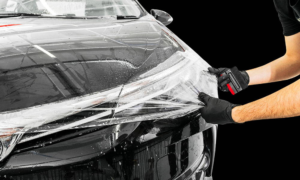The Evolution of the 4runner Generations: A Deep Dive into Each Generation

The 4runner Generations has been a trusted companion to adventurers, off-road enthusiasts, and everyday drivers alike since it first graced the automotive scene in the mid-1980s. Known for its ruggedness, reliability, and off-road capabilities, the 4Runner has gone through numerous changes, evolving with each generation while maintaining its core identity. In this article, we’ll take a detailed look at the 4Runner generations, from the original model to the latest iteration, and explore how it has adapted to the changing automotive landscape.
Overview of the Toyota 4runner Generations
Before we dive into the specific generations of the Toyota 4runner Generations, let’s briefly outline what makes this SUV so beloved. The 4Runner is a midsize SUV. It has always been known for its exceptional off-road capabilities. However, it’s also a practical family vehicle with a comfortable interior, making it a popular choice for a variety of drivers.
The 4Runner’s history spans more than three decades, with each generation offering unique features and technological advancements. It is often seen as a symbol of Toyota’s commitment to building durable vehicles that excel in challenging environments, whether that be on rugged mountain trails or city streets.
The First Generation (1984–1989): A New Beginning
The story of the Toyota 4Runner begins in 1984 when it was first introduced. However, it wasn’t technically an entirely new vehicle but rather a version of the Toyota Hilux compact pickup truck with a rear seat and a fixed roof. This first-generation model was not initially marketed as an SUV in the way we think of them today, but rather as a compact off-road vehicle with the ability to carry passengers in a more comfortable cabin.
Key Features of the First Generation:
- Engine: Powered by a 2.4-liter four-cylinder engine, with an optional 2.4-liter turbocharged engine for increased power.
- Transmission: 4-speed manual or 5-speed manual transmission options, later upgraded with a 4-speed automatic transmission.
- Off-Road Features: The 4Runner was equipped with a part-time four-wheel-drive (4WD) system, which provided solid off-road performance.
- Design: The first 4Runner had a distinctive body-on-frame construction, making it ideal for rugged terrain. It came in both 2-door and 4-door variants, with removable tops on some models for an open-air feel.
This generation laid the foundation for the 4Runner’s identity as a versatile off-roader. It quickly gained popularity for its ability to handle rough trails and its simple, reliable design.
The Second Generation (1990–1995): More Refinement and Comfort
By 1990, the Toyota 4runner Generations was already proving its worth as a capable off-roading vehicle, but the second generation brought more comfort and features aimed at attracting a broader range of buyers. With a more refined design, better interior space, and improved safety features, the second-generation 4Runner offered a more practical experience without compromising its rugged reputation.
Key Features of the Second Generation:
- Engine Options: The second-generation 4Runner was available with a 3.0-liter V6 engine and a 2.4-liter four-cylinder, both offering more power than the previous generation.
- Transmission: The vehicle came with a 5-speed manual transmission or an automatic, both paired with the V6 engine for better overall performance.
- Off-Road Features: This generation introduced the optional full-time four-wheel-drive system, which improved off-road traction and control.
- Design: The second generation introduced a more modern look with a larger, more comfortable interior. The vehicle also gained more sophisticated suspension systems to improve its on-road manners.
The Toyota 4Runner continued to evolve with a more user-friendly design, making it a great balance between daily driver and off-road adventurer.
The Third Generation (1996–2002): Bigger, Better, and More Tech-Savvy
The third generation of the Toyota 4Runner entered the new millennium with major upgrades. It featured a larger body, more advanced technology, and better off-road capabilities. This version was a big step forward for the model. Toyota began shifting the 4Runner toward being a more family-friendly SUV. Still, it continued to appeal to fans of its strong off-road performance.
Key Features of the Third Generation:
- Engine Options: The 4Runner now came with a 3.4-liter V6 engine, which was a significant upgrade in terms of power and efficiency. A 2.7-liter four-cylinder engine was still available.
- Transmission: Automatic and manual transmission options were available, but the automatic transmission gained popularity during this era.
- Off-Road Features: The third generation introduced a full-time four-wheel-drive system with a limited-slip differential, giving the 4Runner superior off-road capabilities.
- Design: The design was more rounded and aerodynamic compared to earlier models, and the interior was upgraded with more modern features like air conditioning, power windows, and improved seating arrangements.
- Safety Features: The third generation also included improvements in safety with better airbags and anti-lock brakes.
The third generation represented a more modern, refined version of the 4Runner, attracting a new generation of buyers who wanted both rugged off-road capability and daily usability.
The Fourth Generation (2003–2009): A Technological Leap Forward
By the time the fourth-generation 4Runner arrived, Toyota had made significant strides in both technology and design. This generation continued to be built on a rugged body-on-frame platform, but it now offered more luxury and technology than ever before. The 4Runner became even more of a family vehicle with a refined ride and more interior space, all while keeping its legendary off-road abilities.
Key Features of the Fourth Generation:
- Engine Options: A 4.0-liter V6 engine became the standard, delivering significantly more horsepower and torque. The option for a 4.7-liter V8 engine was also available in some trims.
- Transmission: The 4Runner received a 5-speed automatic transmission, improving driving smoothness and performance.
- Off-Road Features: The fourth-generation model introduced a sophisticated multi-terrain system with various driving modes designed for different types of off-road environments.
- Design: The design was more refined, offering a spacious interior with more comfortable seating and higher-quality materials.
- Technology: This generation also introduced advanced technology like the available touchscreen navigation system, satellite radio, and Bluetooth connectivity.
- Safety Features: Enhanced safety features, including stability control, traction control, and curtain-side airbags, became more widely available.
The fourth-generation 4Runner struck a fine balance between luxury and off-road capability, making it a versatile SUV that was equally at home in the city or on a trail.
The Fifth Generation (2010–Present): Modern Innovation Meets Rugged Reliability
The fifth generation of the Toyota 4Runner, which continues to be produced today, represents the pinnacle of the 4Runner’s evolution. While maintaining its reputation for ruggedness and reliability, the fifth-generation model introduces more modern technology, a more refined ride, and even greater off-road capabilities.
Key Features of the Fifth Generation:
- Engine Options: The 4Runner is equipped with a 4.0-liter V6 engine as the standard offering, with the same 270 horsepower and 278 lb-ft of torque. The V8 option has been discontinued, as the V6 engine offers ample power for most driving needs.
- Transmission: The 5-speed automatic transmission remains, paired with a more efficient drivetrain.
- Off-Road Features: The latest 4Runner features Toyota’s advanced Kinetic Dynamic Suspension System (KDSS) for improved off-road performance. The SUV also offers Crawl Control, a system designed to help drivers navigate through challenging off-road conditions.
- Design: The design of the fifth-generation 4Runner has remained relatively true to its origins, with a boxy shape that enhances its rugged appeal. However, the interior has been upgraded with modern materials, user-friendly infotainment systems, and more comfort features.
- Technology: The 5th generation includes modern tech like a standard 8-inch touchscreen, Apple CarPlay, Android Auto, and Toyota Safety Sense, including lane departure warning and adaptive cruise control.
The fifth-generation 4Runner is designed to offer unmatched off-road capabilities while maintaining modern creature comforts and technology, ensuring that it can meet the needs of both adventure-seekers and families.
Toyota 4Runner Generations: Key Differences
| Generation | Years | Notable Features | Off-Road Capabilities |
|---|---|---|---|
| First | 1984–1989 | Body-on-frame, part-time 4WD, compact design | Excellent for its time |
| Second | 1990–1995 | Full-time 4WD, more power and comfort | Improved handling |
| Third | 1996–2002 | Larger body, full-time 4WD, better tech | Exceptional off-road |
| Fourth | 2003–2009 | V6 and V8 engines, advanced safety and tech | Sophisticated off-road |
| Fifth | 2010–Present | Modern tech, V6 engine, KDSS, Toyota Safety Sense | Advanced off-road features |
Frequently Asked Questions (FAQs)
Q1: Which Toyota 4Runner generation is the best for off-roading?
The best generation for off-roading depends on your specific needs, but many enthusiasts consider the fifth-generation 4Runner to be the most capable, thanks to its advanced off-road systems like the Kinetic Dynamic Suspension System (KDSS) and Crawl Control. However, earlier generations, especially the third and fourth, also have strong off-road capabilities.
Q2: How long will a Toyota 4Runner last?
A well-maintained Toyota 4Runner can last between 250,000 to 300,000 miles or more. Regular maintenance and proper care, such as oil changes and brake inspections, are crucial for ensuring the longevity of your 4Runner.
Q3: What is the difference between a 4Runner and a Land Cruiser?
The Toyota Land Cruiser is larger and more luxurious than the 4Runner and is designed for heavy-duty off-roading and more extreme conditions. The 4Runner is more compact and better suited for everyday use while still being highly capable off-road.
Q4: Is the Toyota 4Runner a reliable vehicle?
Yes, the Toyota 4Runner is known for its reliability and durability. It has a reputation for lasting many years and handling rough conditions, which makes it a great choice for long-term ownership.
Q5: Can the 4Runner be used as a family car?
Yes, the Toyota 4Runner is spacious and comfortable enough for families. The latest models come with plenty of room, tech features, and safety systems to ensure a comfortable ride for all passengers.
Conclusion
The Toyota 4Runner has undergone significant changes across its generations, but its core identity as a reliable and rugged off-road vehicle has remained constant. Whether you’re looking for a capable off-roading machine, a dependable daily driver, or a family-friendly SUV, the 4Runner has something to offer. From the early days of the first generation to the modern features of the fifth generation, the 4Runner continues to impress, and it remains one of Toyota’s most iconic vehicles.








